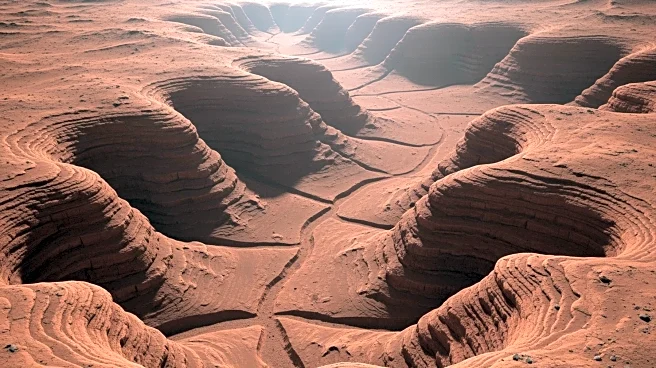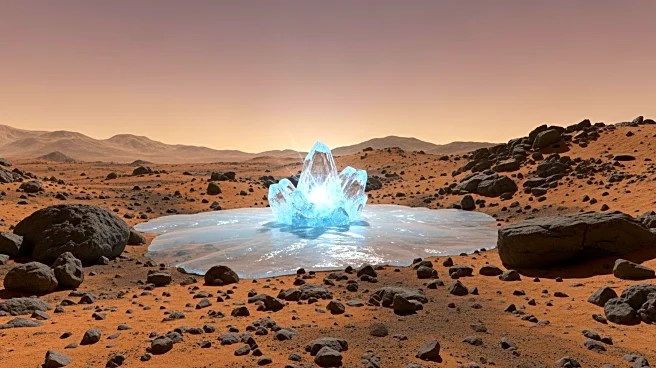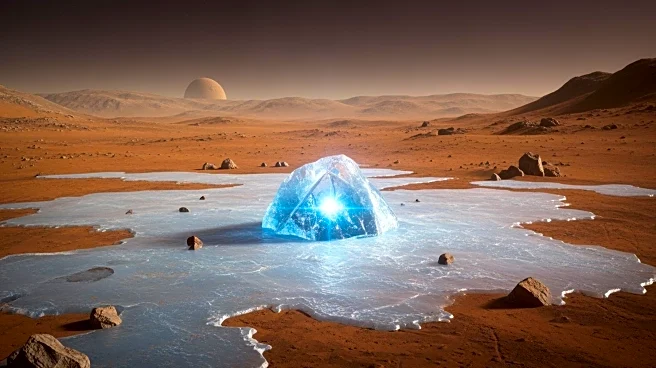What's Happening?
In the deserts of Namibia, Saudi Arabia, and Oman, scientists have discovered intricate tunnels carved into solid rock, believed to be the work of an unknown microscopic lifeform. These tunnels, found
in marble and limestone, are no wider than half a millimeter and extend up to three centimeters long. The discovery, initially made by geologist Cees Passchier, has puzzled researchers as no known lifeform is responsible. The tunnels contain calcium-carbonate powder, indicating that microorganisms might have tunneled through the rock to access nutrients. This finding challenges existing assumptions about where life can exist on Earth, as these microorganisms appear to thrive in environments previously considered inhospitable.
Why It's Important?
The discovery of these tunnels has significant implications for understanding Earth's carbon cycle. The microorganisms responsible for the tunnels may have influenced local carbon cycling by mobilizing carbon from the rock. This suggests that subterranean microbes play a crucial role in the planet's carbon story, alongside forests and oceans. Additionally, the ability of life to exist in such extreme conditions expands the definition of 'habitable' environments, potentially informing the search for life on other planets. If life can survive in the harsh conditions of desert rocks, it raises the possibility of life existing in similar environments on Mars or icy moons.
What's Next?
Researchers are continuing to study these tunnels to determine the exact nature of the microorganisms responsible. This ongoing research could lead to a better understanding of the role of subterranean life in Earth's ecosystems and its potential applications in astrobiology. As scientists delve deeper into this mystery, they may uncover new insights into the adaptability and resilience of life on Earth.
Beyond the Headlines
This discovery highlights the potential for unknown lifeforms to exist in extreme environments, challenging the traditional boundaries of biology. It also underscores the importance of interdisciplinary research in uncovering the complexities of life on Earth and beyond.











